Main Space Exhibition /

GINA’MATIMG
‘Time of Acquiring Learning’
Julia Rose Sutherland
November 12th - December 23rd
Opening Reception /
Saturday November 12th, 7PM- 9PM
GINA’MATIMG ‘Time of Acquiring Learning’:
In Conversation with Julia Rose Sutherland
Listen on Youtube:
Jasmine Piper talks with Julia Rose Sutherland about Sutherland's exhibition, GINA’MATIMG ‘Time of Acquiring Learning’.
*Content Warning: Police Brutality, Self Harm, Bodily Harm, Missing Persons, Adult Language*
In Conversation with Julia Rose Sutherland
Listen on Youtube:
Jasmine Piper talks with Julia Rose Sutherland about Sutherland's exhibition, GINA’MATIMG ‘Time of Acquiring Learning’.
*Content Warning: Police Brutality, Self Harm, Bodily Harm, Missing Persons, Adult Language*
Julia Rose Sutherland's exhibition "GINA'MATIMG" is a contemporary collection of explorations subverted Gawiei's "quillwork" inspired by her heritage as a Mi'kmaq First Nations woman of Turtle Island. Gawiei is a process of embroidery/ embellishment with porcupine quills.
Sutherland is using this opportunity to start a dialogue about the representation of Indigenous craft, questioning the canon of westernized gallery practices, authority, and decolonization practices. This work and practice challenge power structures and systemic racism (which actively hinder and oppress minorities) and push for dismantling white supremacy through active conversation and dialogue.
This exhibition included one community quillwork workshop at The New Gallery site.
Sutherland is using this opportunity to start a dialogue about the representation of Indigenous craft, questioning the canon of westernized gallery practices, authority, and decolonization practices. This work and practice challenge power structures and systemic racism (which actively hinder and oppress minorities) and push for dismantling white supremacy through active conversation and dialogue.
This exhibition included one community quillwork workshop at The New Gallery site.
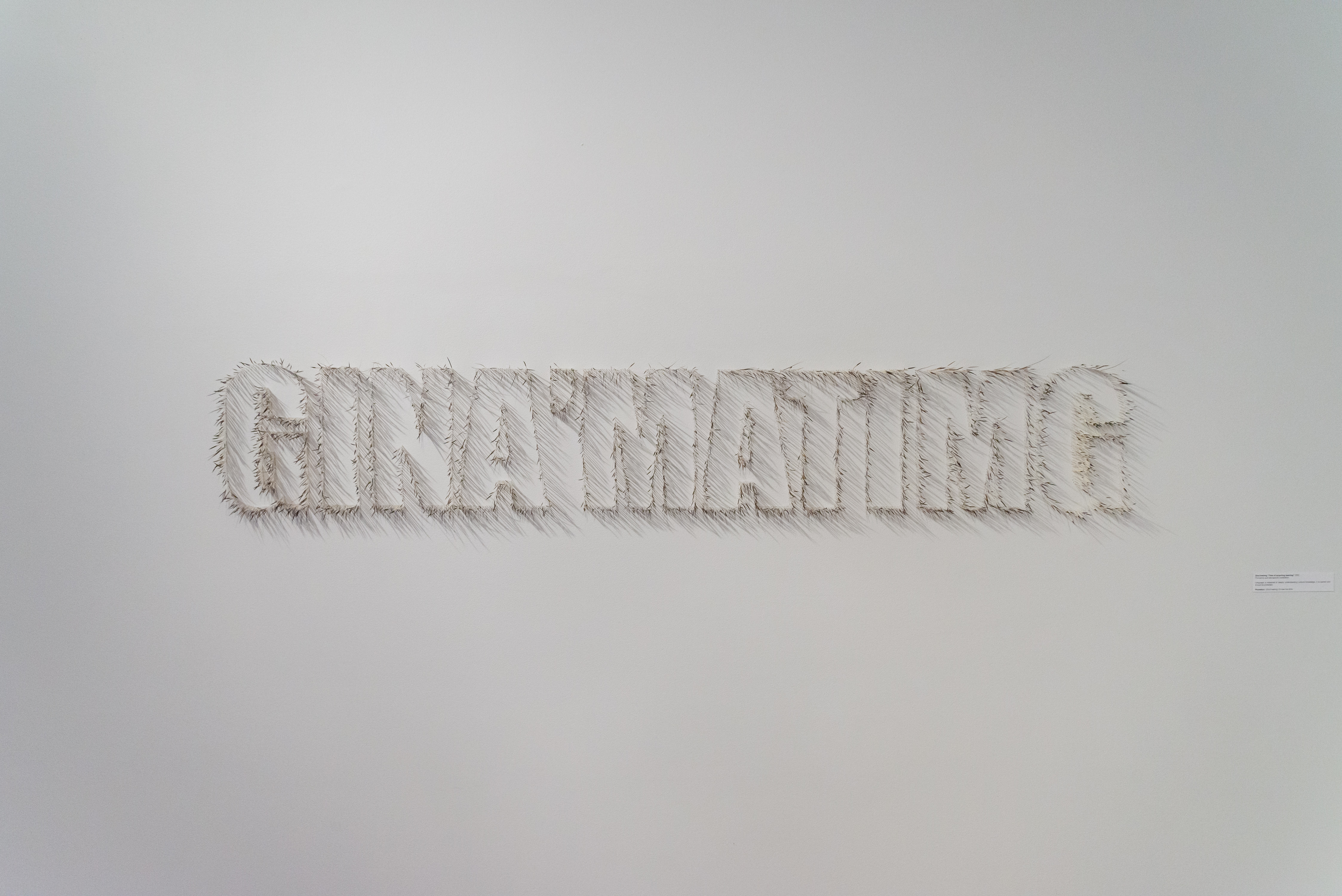
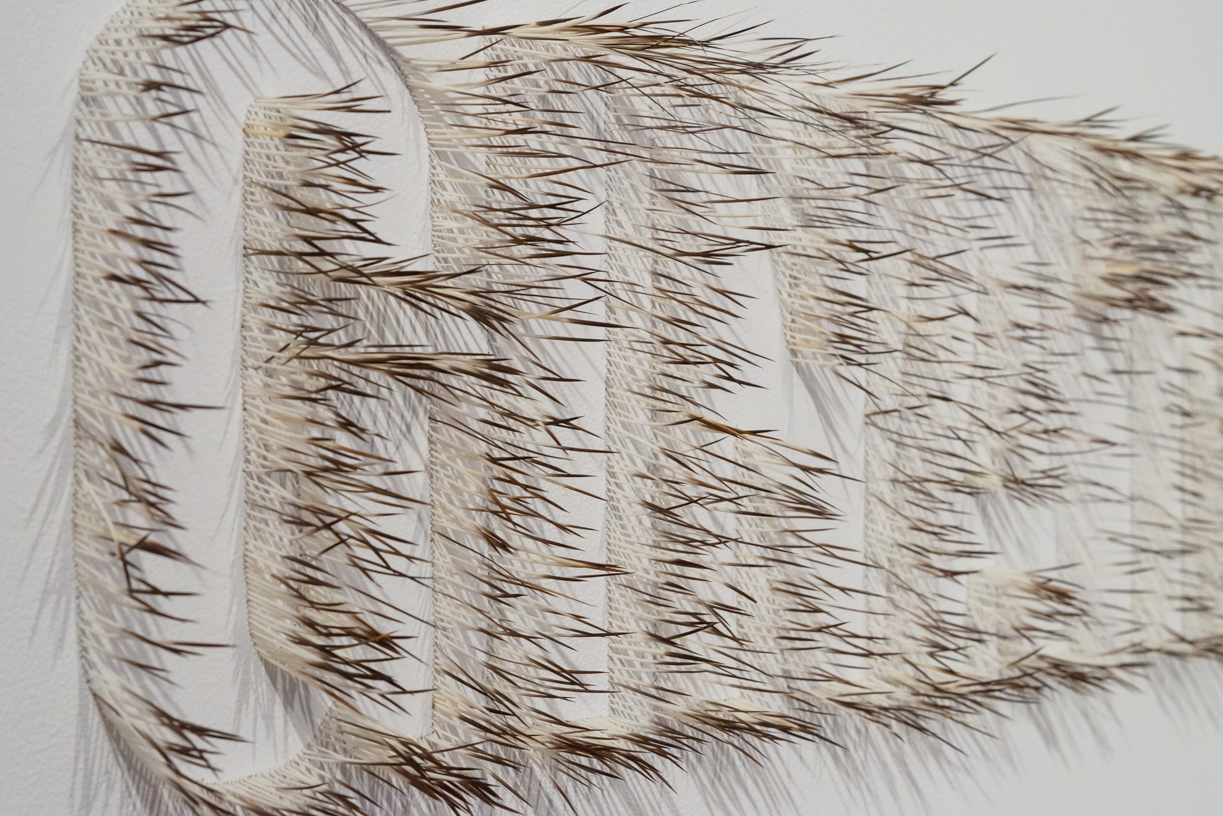

Documentation by Chelsea Yang Smith
Generous Pain, Denied Indulgence
GINA’MATIMG Essay
Gaining knowledge is riddled with challenges and triumphs. The journey of doing so is abundant in opportunities to grapple with developing a new skill and confronting our insecurities as we face trial and error firsthand. It is in that experience of building our understanding, whilst coming to terms with the investment required to truly master its execution, that we are humbled and proud—of ourselves for what we have achieved, of those who came before who have taught us, and those who will come after who will learn.
That relationship with learning is further complicated when its preceded by barriers of trauma and genocide—when the people who would have shared their stories and abilities are denied the right to do so by violent force. When Indigenous communities on Turtle Island had the lands they cared for stolen, children abducted and murdered, and cultural practices banned, their colonizers intended to purge Indigenous peoples from history so settlers could determine the narrative’s retelling. And yet, Indigenous people persist.
Resilience is not an adequate word to describe confronting generations of harm, disputing a continued effort to historicize a living population, and criticizing the deeply held anti-Indigenous beliefs that run rampant in Canada. Resilience implies overcoming the hardships an unbiased universe proposes, rather than surviving a concerted effort to violate and destroy; both are admirable, but the latter is a necessity. Julia Rose Sutherland’s work is much more than resilient; it is haunting and beautiful, pointed and evocative, and encourages an appreciation for practices that are maintained rather than archived.
In her performance Gesipatl Iga’latl” (Pain and Release), porcupine quills pierce Sutherland’s flesh, rendering her body sacred and precious. She mirrors the beloved birchbark boxes that are delicately woven with quills by her Mi’kmaq community, honouring her people by using those same slender barbs against her skin and calling attention to the commodification of Indigenous bodies often denied dignity and life. Sutherland embodies a resonant autonomy because she is not an object for a glass case and her actions are not for you. They are a tribute and we are simply fortunate she has decided to share that moment with us.
In this, Sutherland compromises one of the foundations of colonialism. Rather than enabling the legacy of a white supremacist lens that would fetishize or exoticize her actions and maintain a hierarchy of power, she has repurposed the frame to reflect the strength of Indigenous peoples as they persevere and thrive. Simultaneously, Sutherland exposes the intimate ties between privilege and complacency as she bleeds to reconcile with Canada’s colonial history and honour her Mi’kmaq ancestors.
It is in Sutherland’s stoic gaze that we are denied any indulgence in her pain. Instead, we are asked to watch as Sutherland draws the explicit parallels between seeking colonially forbidden knowledge and the mutilation of her body, a spiritual gesture that is deeply tied to endurance and kinship in certain Indigenous ceremonies and does not abide by the comfort of an audience who may be unfamiliar with its significance.
In the end, Sutherland is generous with her rich metaphors and references, but it is up to us to learn from them. Her example provides insight into the terms we must embrace when addressing Canada’s colonial history that has largely been left to fester, and inspiration for the possibilities that lie ahead.
That relationship with learning is further complicated when its preceded by barriers of trauma and genocide—when the people who would have shared their stories and abilities are denied the right to do so by violent force. When Indigenous communities on Turtle Island had the lands they cared for stolen, children abducted and murdered, and cultural practices banned, their colonizers intended to purge Indigenous peoples from history so settlers could determine the narrative’s retelling. And yet, Indigenous people persist.
Resilience is not an adequate word to describe confronting generations of harm, disputing a continued effort to historicize a living population, and criticizing the deeply held anti-Indigenous beliefs that run rampant in Canada. Resilience implies overcoming the hardships an unbiased universe proposes, rather than surviving a concerted effort to violate and destroy; both are admirable, but the latter is a necessity. Julia Rose Sutherland’s work is much more than resilient; it is haunting and beautiful, pointed and evocative, and encourages an appreciation for practices that are maintained rather than archived.
In her performance Gesipatl Iga’latl” (Pain and Release), porcupine quills pierce Sutherland’s flesh, rendering her body sacred and precious. She mirrors the beloved birchbark boxes that are delicately woven with quills by her Mi’kmaq community, honouring her people by using those same slender barbs against her skin and calling attention to the commodification of Indigenous bodies often denied dignity and life. Sutherland embodies a resonant autonomy because she is not an object for a glass case and her actions are not for you. They are a tribute and we are simply fortunate she has decided to share that moment with us.
In this, Sutherland compromises one of the foundations of colonialism. Rather than enabling the legacy of a white supremacist lens that would fetishize or exoticize her actions and maintain a hierarchy of power, she has repurposed the frame to reflect the strength of Indigenous peoples as they persevere and thrive. Simultaneously, Sutherland exposes the intimate ties between privilege and complacency as she bleeds to reconcile with Canada’s colonial history and honour her Mi’kmaq ancestors.
It is in Sutherland’s stoic gaze that we are denied any indulgence in her pain. Instead, we are asked to watch as Sutherland draws the explicit parallels between seeking colonially forbidden knowledge and the mutilation of her body, a spiritual gesture that is deeply tied to endurance and kinship in certain Indigenous ceremonies and does not abide by the comfort of an audience who may be unfamiliar with its significance.
In the end, Sutherland is generous with her rich metaphors and references, but it is up to us to learn from them. Her example provides insight into the terms we must embrace when addressing Canada’s colonial history that has largely been left to fester, and inspiration for the possibilities that lie ahead.
- Brandon Giessmann

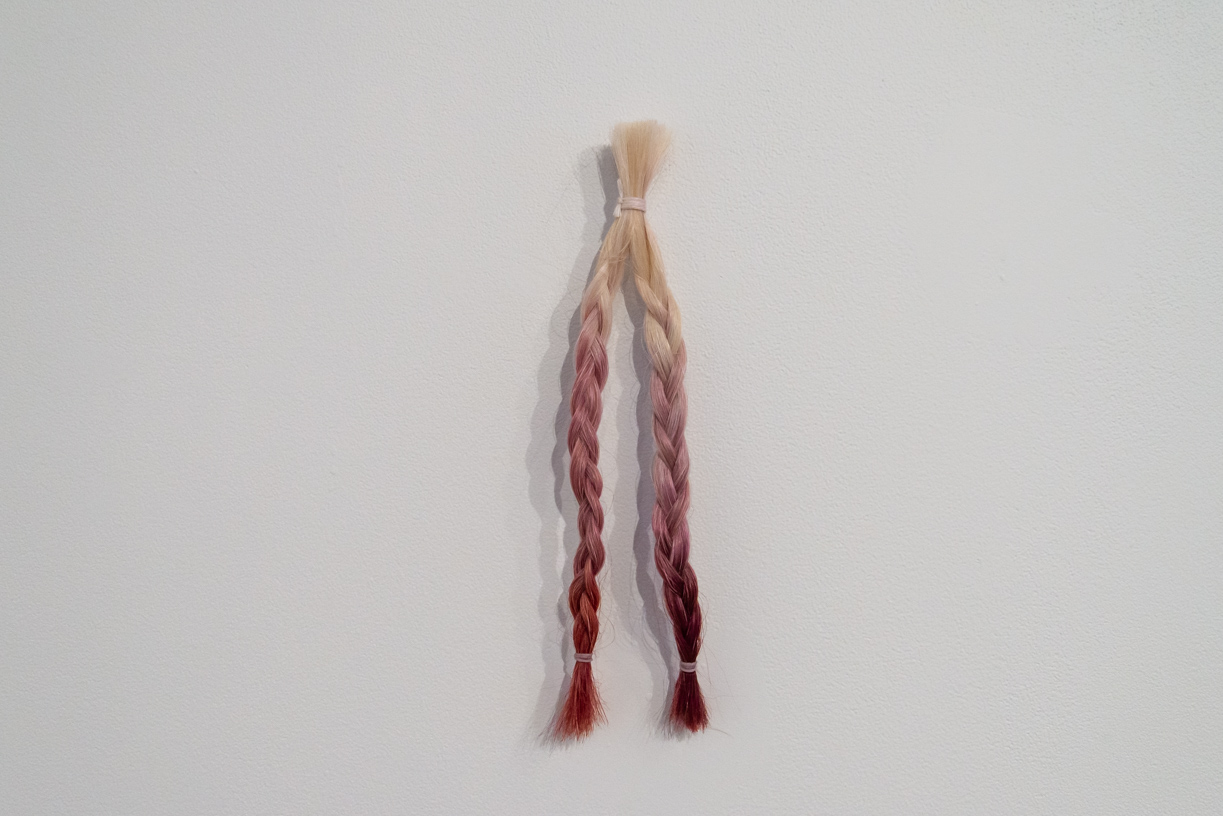

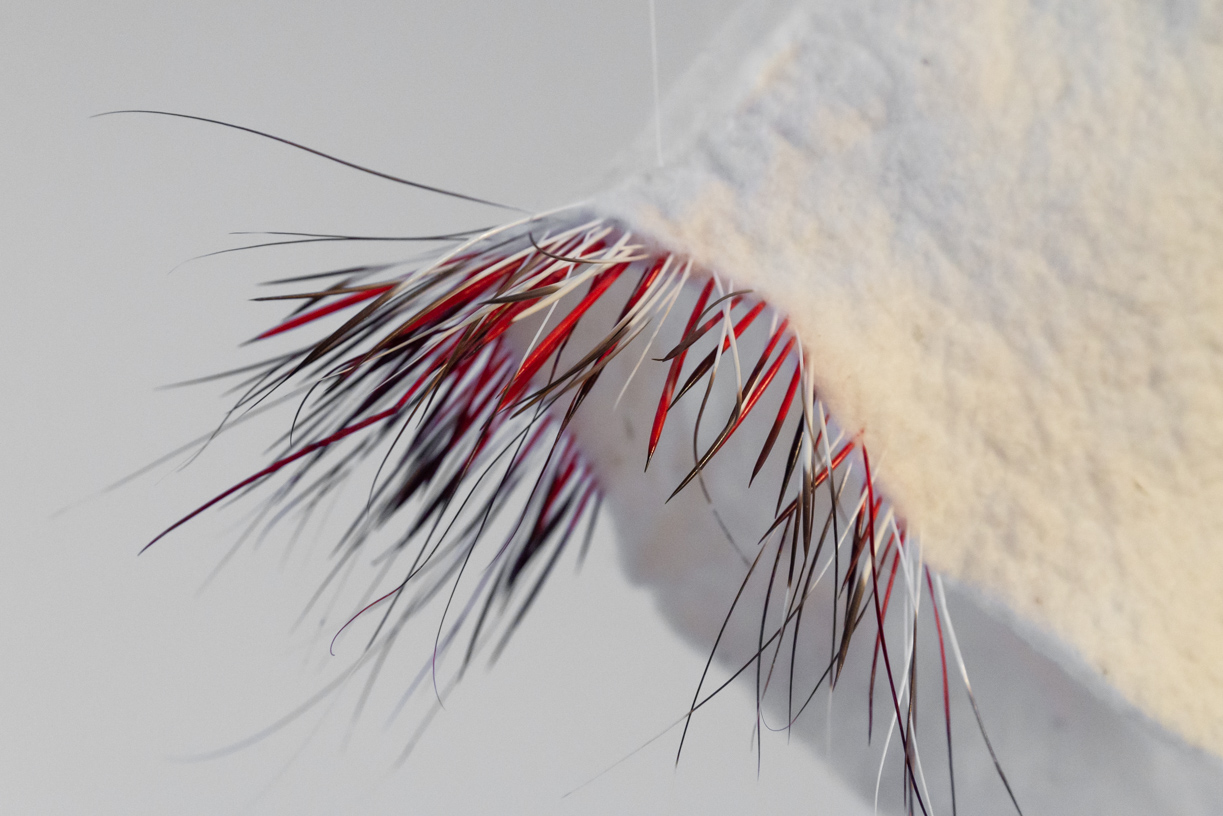


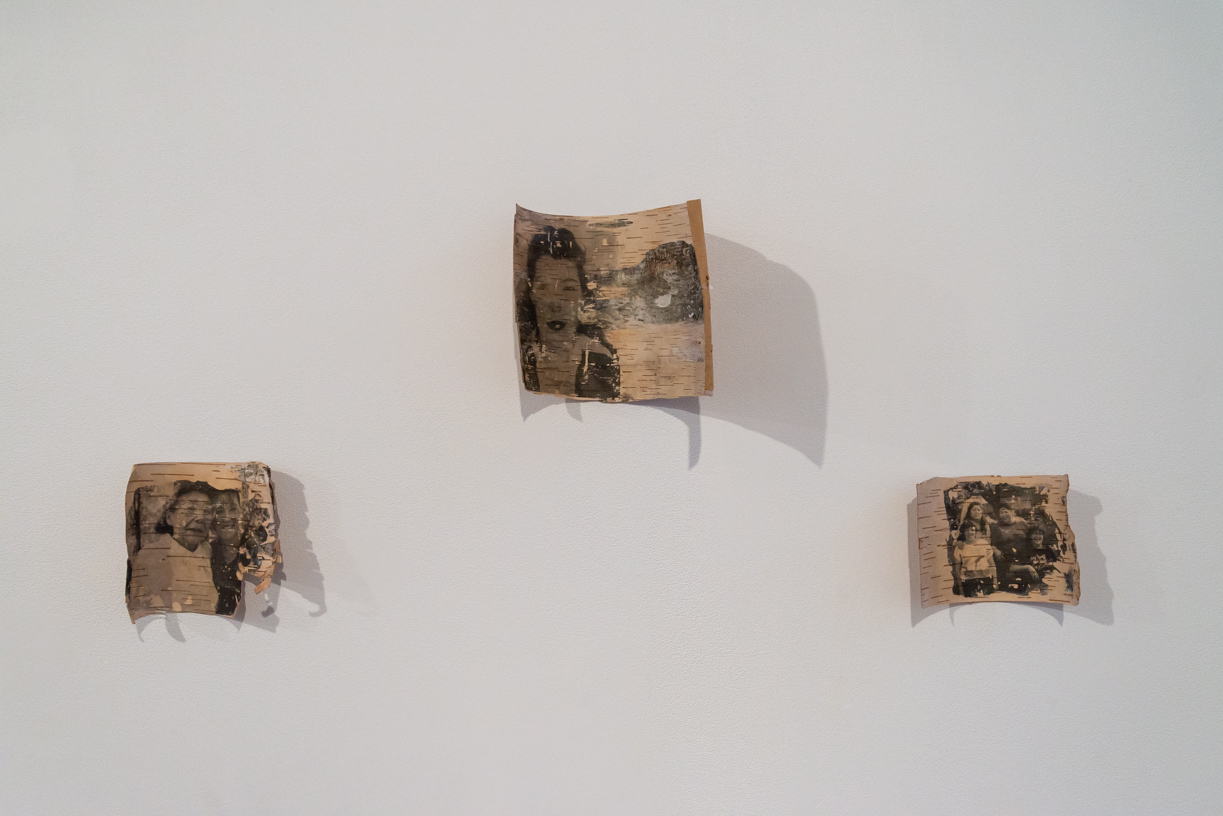

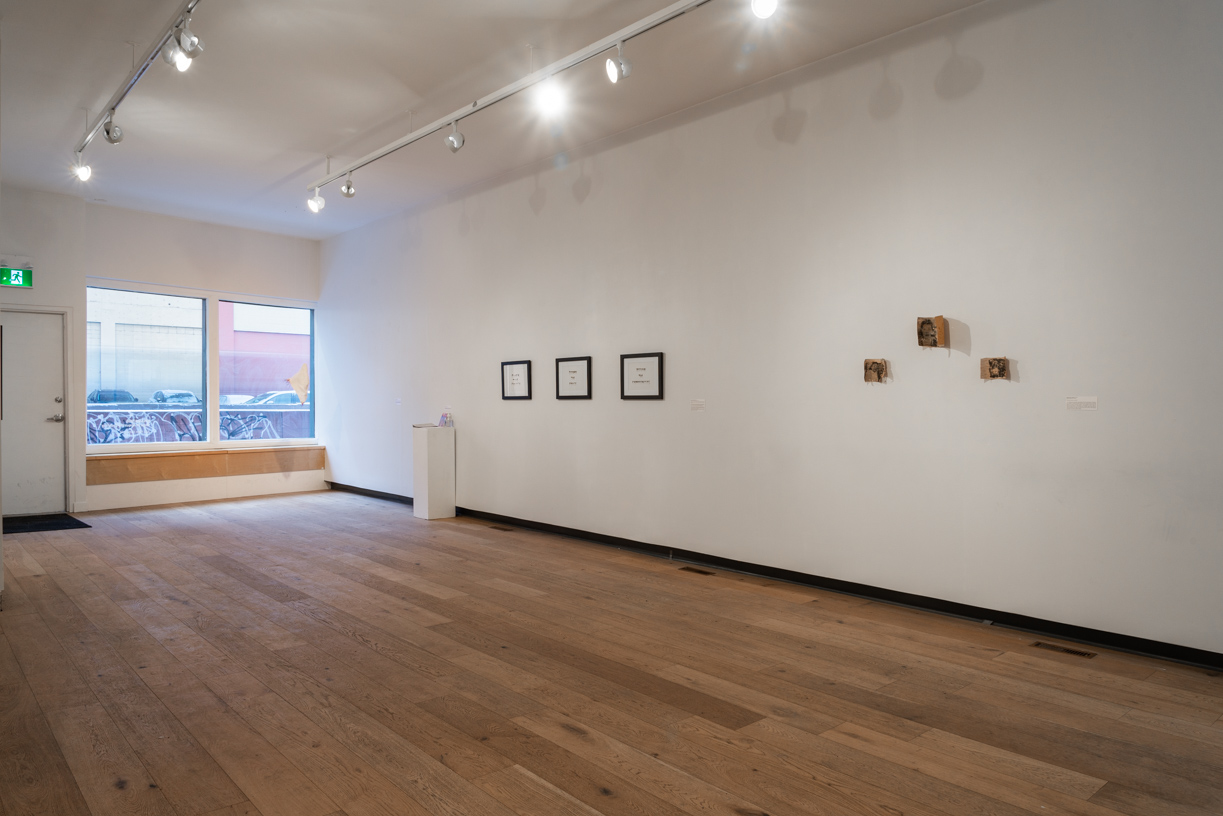




Documentation by Chelsea Yang Smith
Julia Rose Sutherland (b.1991) is a Mi’kmaq (Metepenagiag Nation) / settler artist and educator (Assistant Professor at OCADU) based out of Tkaronto (Toronto, Canada). Sutherland’s interdisciplinary art practice employs photography, sculpture, textiles, and performance. She earned her MFA at the University at Buffalo (2019) and BFA in Craft and New Media at the Alberta University of the Arts (2013). She has recently shown work at The Biennale d’art contemporain autochtone (BACA), Bemis Center of Contemporary Art (where she was also a summer 2021 Artist in Resident), the Mackenzie Art Gallery, K Art Gallery, WAAP Gallery, and 59 Rivoli Gallery in Paris, France. Sutherland is a recent recipient of the Canada Council for the Arts Creating Knowing Sharing award and the AFA Indigenous Individual Project grant.
Brandon Giessmann is a visual artist and writer who explores trauma, identity, and memory. He received his BFA from the Alberta University of the Arts in 2018 and his MFA at SUNY: University at Buffalo in New York in 2020. His interdisciplinary practice often uses performance, photography, and installation to bridge generational gaps in knowledge and experiences of the closet and genocide, consider the effects of the ongoing AIDS crisis, and reflect upon the role that institutions play in the conservation and presentation of queer histories.
Brandon Giessmann is a visual artist and writer who explores trauma, identity, and memory. He received his BFA from the Alberta University of the Arts in 2018 and his MFA at SUNY: University at Buffalo in New York in 2020. His interdisciplinary practice often uses performance, photography, and installation to bridge generational gaps in knowledge and experiences of the closet and genocide, consider the effects of the ongoing AIDS crisis, and reflect upon the role that institutions play in the conservation and presentation of queer histories.
中文翻译 Chinese Translation ...
